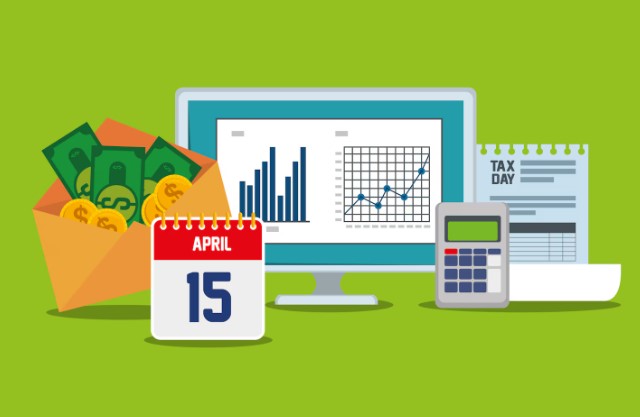Everything in the fast world of investing is about timing. This urges companies to reveal their performance every quarter-after which stock prices respond to the next trend. Hence, the earnings calendar is a powerful tool for U. S. investors struggling to obtain an edge.
An earnings calendar provides help to traders, investors, and analysts, informing them when companies will issue earnings. Consequently, investors can plan their trades, monitor market happenings, and manage risks much more skillfully, so they don’t get caught off guard.
What is the Earnings Calendar?
An earnings calendar forewarns invited companies listed on the exchange of the date of their quarterly or annual financial statement filings. The informational package generally covers the financial performance of a corporation, including its revenue, profit margins, net income, and price.
All these reports are regrettably subject to a company’s filing with the Securities and Exchange Commission; hence, the earnings calendar will also inform investors on just when they may anticipate any initial reports or awkward news.
In other words, an earnings calendar is your station from which a company’s physical health is monitored alongside market reactions.
Why Earnings Hold the Key
The earnings calendar is not a list of dates: it is a strategic investment tool. The only means to finesse the market in the U. S. with all the bad lots of traders around is: Certainly important is the availability of information promptly.
Helps Plan Smart Trades
An earnings calendar assists the investor in foreseeing numerous occasions and prepares for planning potential trades beforehand. If, for instance, a company tends to have a fantastic report, a trader would prefer taking a stand while the company climbs upwards in an unforeseen scenario ahead. Otherwise, it is always in the best interest of some traders to take their positions directly after the release when the bulk of the day traders exit. Therefore, the earnings calendar helps in taking a well-calculated decision with the right timing by individual traders.
Predicts Market Volatility
With earnings reports, it’s consequences. Earnings reports and reversal points remain vital in likely movements. Since there is a high likelihood that these words can be lifted or lowered in any direction, timely bets over whether the stock has the will to sustain or go to fresh lows are the result. Regularly studying the earnings calendar can help manage through all the knees-up and downswings so that those knuckheads may, ahead of time, manage uncertainties and permutations of probabilities.
Tracks Industry Performance.
The earnings calendar tells investors when the peer companies in their sector are simultaneously reporting. Also, if several tech or energy companies are releasing reports on a given week, the seasoned trader may try to associate the trending movements of each and conceptually build short and long trades.
Keeps Investors Informed
Stock market and currency trading are often confusing. The earnings calendar, in a way, keeps investors ahead so they can try and brace themselves for impending events associated with or track data in reference to the company they have invested in. At the root of it all is a way for investors to overcome their own hesitation to make sense of a situation.
Reading an Earnings Calendar
At its core, reading an earnings calendar is straightforward once one has an understanding of a few components. Each entry will give you something akin to a quick insight you can use toward shaping your investment decisions.
The details you will commonly see on an earnings calendar give information about:
- Company Name and Ticker Symbol: Identifies the company and its stock.
- Date of Report: The exact day when the earnings results will be announced.
- Time of Release: Companies usually release earnings before market open (BMO) or after market close (AMC).
- EPS Estimate: Analysts’ projected earnings per share for the quarter.
- Revenue Estimate: Expected revenue for the reporting period.
Observing these details can enable investors in anticipating potential price movements and thereby impart some sound knowledge when it comes to making decisions for an investment-dependent X-factor.

Who Uses an Earnings Calendar?
Investors and financial practitioners enjoy the benefits of keeping up with the earnings calendar. Let’s look at the different kinds of people who use it and why.
- Short-Term Traders
Day traders and swing traders prepare the earnings calendar to leverage positions around quarterly earnings. Since these reports usually trigger huge movements in the stock price, they can take advantage of quick, high-profit trades.
- Long-Term Investors
Long-term planning also benefits from the earnings calendar. It gives an idea if the company is growing or decreasing over conveyance of time, allowing the investor to judge whether to acquire, hold, or liquidate its shares. It may provide insight into strengths so that their long-term strategy is strengthened.
- Financial Analysts and Financial Advisors
Financial professionals use the earnings calendar to appropriately manage client portfolios, forecast upcoming company earnings, and make changing decisions ahead of the release. It is the most useful tool for successful budgeting and market analysis.
Best Practices for Using an Earnings Calendar
There are several helpful tactics for optimizing the use of an earnings calendar. Highlighted here are steps aimed at ensuring the best and most timely investment choices possible.
- Focus on Key Companies
Instead of tracking every stock, focus on companies that directly affect your portfolio or influence major indexes like the S&P 500 or NASDAQ. This focus saves time and delivers more relevant insights.
- Check Time Zones and Timing
Most U. S. companies release earnings in Eastern Time. Please verify your times if in another time zone or risk missing a critical earnings update.
- Monitor Analyst Estimates
Analyst estimates are altered continually before earnings. The crucial data for investors to monitor before the release is how public forecasts are changing, since this may often set the table for the results.
- Combine It with Other Tools
Why not throw in some technical analysis tools, a stock screener, or financial news in the mix when working from the earnings calendar? By completing the picture through as many resources as possible, the investor has a better-rounded view of trading decisions.
Where to Get an Earnings Calendar One Can Trust
Several popular financial websites provide reliable earnings calendars that stay up to date for U. S. investors. Here are a few favorite sources:
- Nasdaq Earnings Calendar: Lists formal earnings releases and financial info.
- Yahoo Finance Search: Find data on EPS calculations, historical EPS, and earnings analyst expectations.
- Investing.com: Sort according to industry, date, or market cap.
- MarketWatch Earnings Calendar: Shows analyst estimates and historical performance.
By using these platforms, investors can keep themselves informed and act confidently when earnings season hits.
How Earnings Results Affect Stock Prices
Earnings announcements generally affect stock prices because the greater the earnings, the more significant the rise in the stock price will be, etc.
If a company outperforms its earnings, its stock price will likely skyrocket, thanks to Investor confidence.
However, if a company lags on its commitments, the prices are being sharply cut down subsequently to beset the good news.
Black end is observed by investors if the results are somewhat burned out. An example: increasing profits with an increasing revenue or weather with lower profits. Thus, a strategy largely attained depends on how invested the traders are in that particular company at the time they see the report.
Hence, when using the earnings calendar, an investor can prepare for the massive trade-off and get acclimated to a strategy that comes along with tracking performance review while remaining well ahead.
Common Mistakes to Avoid
Even experienced investors can bungle the earnings calendar. Here are common mistakes and what to do:
- Disregarding the time of release (Pre-market or Post-market), as this can cause missed opportunities since one may be asleep.
- Checking the EPS to extremes and maybe not checking revenue or guidance.
- Being too confident and overreacting to the tiniest difference from what analysts are forecasting.
- Misconceiving that the broader trend in any sector could have a very big influence on how individual companies perform.
Avoid all those to watch earnings calendar transactions efficiently and engage in insightful trade reservations.
Conclusion
The earnings calendar is not just a schedule but a robust trading tool. Being aware of when company reports come out puts investors in a position to anticipate volatility, monitor performance, and wisely allocate capital.
This will let you trade confidently, managing risk efficiently, and staying ahead of the market. This can be a crucial instrument in your arsenal towards profitable trades and accumulation of wealth, whether you are new to investing or an experienced trader.



